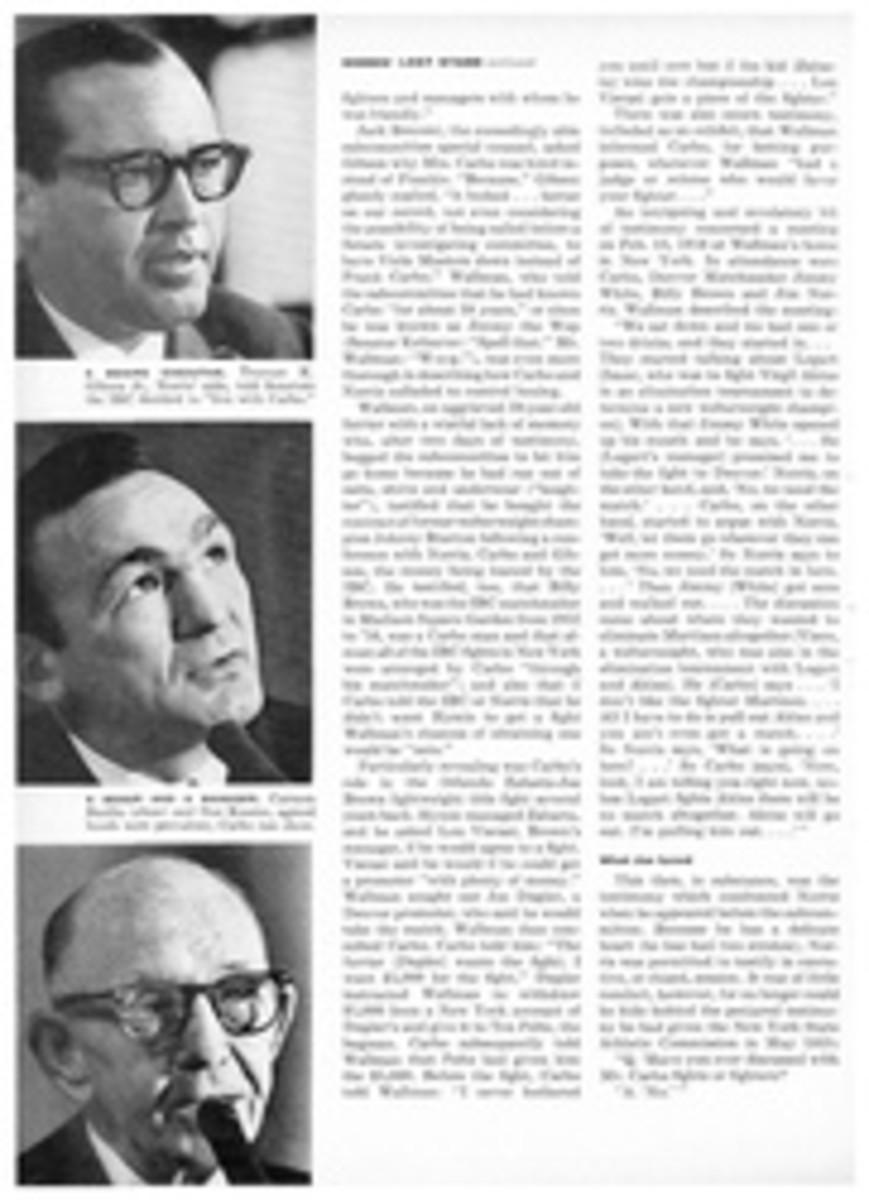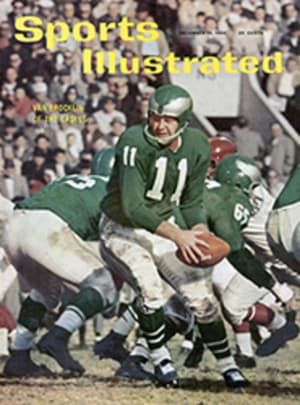
DUTCH IS THE DIFFERENCE
The team that wins the Western Conference title will have to face the Philadelphia Eagles, and that will not be the easy assignment it may at first appear to be. While few winning teams in professional football have looked more inept than the Eagles when running the ball, few have been able to offset their weaknesses so well. The reasons are two: the Eagles have an impressive coterie of pass receivers and they have Norman Van Brocklin, one of the two or three best quarterbacks in all football. Cool almost to the point of indifference, Dutch Van Brocklin never gives up no matter how far his team falls behind. He studies and probes defenses with the patience of a mechanic troubleshooting in a faulty motor, and when he finds the flaw he is looking for he attacks it with vigor, intelligence and, usually, wonderful success.
At the beginning of this season the-Eagles had strong running from Clarence Peaks and Billy Barnes. But Peaks broke his leg and Barnes was hampered by a bad knee, and the Eagles were forced to use rookie Ted Dean and, on rare occasions, second-year man Tim Brown as replacements. Both have been improving, but Van Brocklin, who may be a coach next year and who this season functioned as a coach on the field, has had to carry the load. This, with the help of the ingenious plays shown on these pages, he has done very well. Passing brilliantly, changing signals at the line to take advantage of defensive shifts, Van Brocklin should lead the Eagles to their first world professional football championship in 11 years.
The "Genius" play, designed to get the most from the small Eagle running threat and the big Eagle passing attack, develops from a formation which looks like, and from the blocking standpoint is, a run. Called a play-number-pass, it begins when Quarterback Van Brocklin (11) takes snap from center and seemingly hands off to Billy Barnes (33) who crashes into line. Eagle Guard John Wittenborn (62), meanwhile, crosses over for a trap block, convincing opposition play is a run.
Play's payoff comes when Van Brocklin takes ball away from Barnes, turns to throw to Ted Dean (35), who, unnoticed by run-conscious enemy defenders, has sneaked through the line outside tackle, found clear route to undefended secondary. The play, used three times against the New York Giants, resulted in one 19-yard gain and two touchdowns when Giant Middle Linebacker Sam Huff was forced to come up fast to stop trap run, left middle area open to a quick pass.
Another touchdown play follows Eagle pattern of fake run, pass. Fake is to Dean (35). Barnes (black line) sifts into area cleared by Tommy McDonald (25), top Eagle receiver, takes Van Brocklin's pass.
Running, Ted Dean (right), a tall, rawboned rookie, gets the step on the Giants' Sam Huff after grabbing pass during midseason game. Dean, a halfback, is a fine receiver and very fast. No linebacker in pro football can overtake him once he has attained his full speed.
Passing, Norm Van Brocklin is protected by aggressive Center Chuck Bednarik who, at 35, plays on both offense and defense and for almost the entire game. Here Bednarik cuts off Huff (70), who is trying to shoot the gap in attempt to force Van Brocklin into wild throw.
Blocking, Eagle line holds out oncharging Giants as Van Brocklin (11) turns back and retreats to pass. Van Brocklin, who needs only three or four seconds to get the ball away, has benefited from improved Eagle play in the line and better, more experienced pass receivers.
Masking pass as run, Eagles pull End Pete Retzlaff (44) in close, move Dean (35) from halfback to fullback. In its feint of a run, the play, which went for touchdown, is similar to the touchdown pass to Barnes diagramed on page 25
SEVEN ILLUSTRATIONS
ROBERT RIGER
DIAGRAM
TD
33
11
35
25
DIAGRAM
20
33
11
35
TD
89
25

